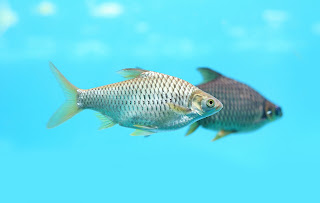How to Spawn Java Barb Fish
Some of Us are Inexperienced with Some Things. Don't Worry; We're Here to Provide Basic Knowledge on Spawning Java Barb Fish for New Fish Farmers Like You.
The Java Barb, sometimes known as the Silver Barb, is a freshwater fish found in shallow waters from tropical Indonesia to subtropical mainland China. This fish is a food fish with a pleasant taste. The meat is soft and white when cooked, but it can also be fried dry with a delicious bite. It sounds yummy, right?
Furthermore, Java Barb includes easy-to-breed fish. As in their native habitat, their developments in the wild are rapid and do not need special care. However, what about those who want to contribute to the spawning of Java Barb fish? Then, this is the article for you.
The Four Types of Java Barb
1. Standard Java Barb
2. Bule Java Barb
3. Silap Java Barb, and
4. Kumpay Java Barb
The most common Java Barb fish in Indonesian waters is the standard ones. Meanwhile, the Kumpay Java Barb, which has relatively long pectoral and tail fins with a white-gray tint, is the most difficult to discover.
Spawning Java Barb Fish
To reiterate, this fish is quite easy to reproduce on its own. For those of you who are interested in having a Java Barb fish farm—spawning Java Barb fish, there are a few things you should keep in mind as follows:
1. Java Barb Fish Hatchery
The hatchery technique for Java Barb fish must guarantee that both male and female fish meet in the same pond, much as the reproductive process, in general, requires a meeting of both genders. Fish that have attained sexual maturity, in other words, males at 2 years and females at 2.5 years, are the most recommended.
Next, in a 1:3 ratio, unite the male and female Java Barb fish together. This seeding process takes around three weeks, during which time you don't have to do anything except watch and wait for it to unfold naturally.
2. Java Barb Fish Transfer
Java Barb fish larvae can be relocated after they reach the age of 21 days. Place the larvae in a specific pond with enough room and adequate oxygen circulation to allow perfect development. The ideal pond size is 1 m2 for 50 fish larvae. Leave it for one month.
3. Java Barb Fish Care
Java Barb fish embryos have begun to hatch; after one month, its larvae are around 5 cm long and can be transferred to the rearing pond. In this phase, you need to start paying extra attention to the oxygen circulation in the pond so that the larvae can grow and develop properly. Don't forget about the feeding process.
4. Harvest Java Barb
Everyone is most enthused about the harvesting process. As the saying goes, you reap what you sow—in this case: harvesting Java Barb fish. After exhaustively completing the spawning Java Barb fish technique, it's time to appreciate the fresh fish steak. And the optimum Java Barb fish to harvest is at least six months old.
We've finally arrived at the finish. That is, in a nutshell, if you want to become a Java Barb fish cultivator—spawning Java Barb fish, you'll need to get a few things in order. Keep in mind that the economic potential of this fish is highly promising, given that it is the favorite of Indonesian food fish. Furthermore, because the breeding procedure is rather simple, this will be a low-maintenance hobby.
https://id.wikipedia.org/wiki/Tawes
https://www.pertanianku.com/mengenal-jenis-jenis-ikan-tawes/
